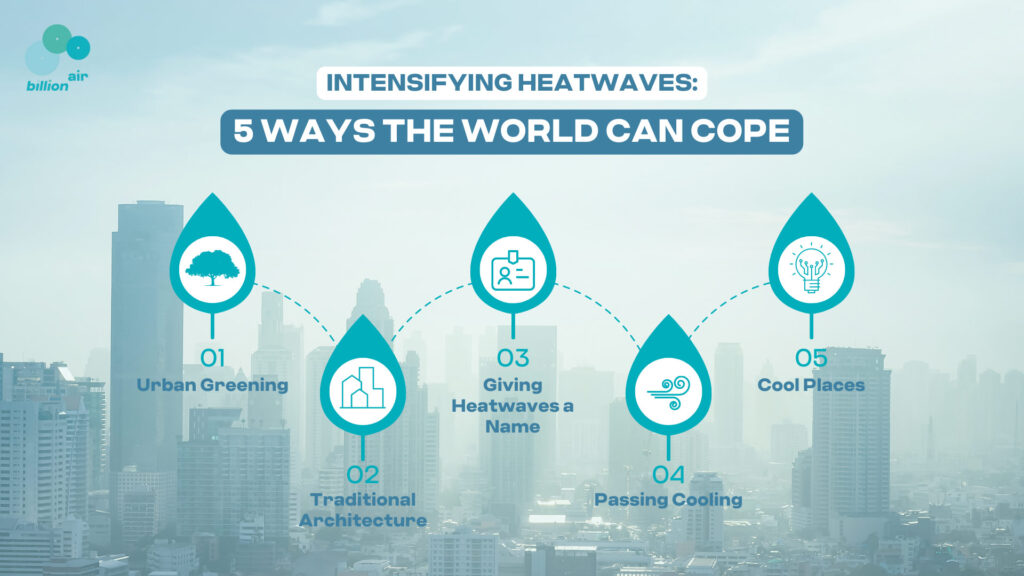From Europe to the United States, record-breaking temperatures have been seen across the Northern Hemisphere in the past month. The readings in Italy and Japan surpassed 40C in June, giving us the most intense heat wave since official records began in 1875.
Large parts of South Asia have also experienced prolonged heat since the beginning of March, wherein the highest positive temperature anomaly ever in the world was recorded in Pakistan. This strong heat wave has caused forest fires in India and triggered an extreme Glacial Lake Outburst Flood in northern Pakistan. The heatwave continued until it reached its preliminary peak towards the end of April.
What may have caused these intense heat waves? According to new research performed by scientists for the World Weather Attribution (WWA), heatwaves around the world are increasingly becoming more frequent and hotter due to climate change.
Extreme long-lasting early heat in India and Pakistan that destroyed harvests and affects the whole world through wheat export ban, has become about 30 times more likely due to human-caused climate change – our latest @wxrisk study https://t.co/MV79EiWOTr pic.twitter.com/KNgy20NLPK
— Dr Friederike Otto (@FrediOtto) May 23, 2022
As climate change intensifies heat waves, what are the steps we need to consider to cope with these increasingly extreme weather conditions? As covered in the World Economic Forum, here are some solutions and ways to help counteract climate change:

1. Urban Greening
Cities that experience high rainfall such as Northern Europe and areas around the equator can benefit from implementing Urban Greening. Incorporating green walls, roofs and corridors creates a cooling effect caused by the water vapor released by plants during photosynthesis.
Freetown is a city in Sierra Leone that is impacted heavily by climate change. They have made a goal to grow 1 million trees over two rainy seasons to build their urban climate resilience and bring back biodiversity into their cities.
2. Traditional Architecture
A study in the Persian Gulf has found that traditional architecture can actually help cool down urban areas. The characteristics of their traditional architecture include narrow alleyways that maximize shadows, internal courtyards, and building materials that are heat-reflective and moisture-absorbing such as limestone.
3. Giving Heat Waves a Name
Similar to hurricane warnings, heatwaves are to be categorized by their threat level. Athens, Greece has appointed Eleni Myrivili as the Chief Heat Officer, now recognized as the first of its kind. In her new position, she works to facilitate the collaboration between Arsht-Rock and UN-Habitat to elevate the issue of heat in cities worldwide. Their goal is to create and share solutions to bring about a cooler future and to protect local communities against the effects of climate change.
"Climate change is and will be the war of all wars that we are facing," @leniomyrivili, our global #ChiefHeatOfficer, said at the 2022 Delphi Economic Forum.
— Arsht-Rockefeller Resilience Center (@ArshtRock) July 6, 2022
Learn how our CHOs are fighting #ClimateChange ⬇️ https://t.co/ra7IzD3dUz
4. Passive Cooling
Passive cooling is a building design approach that is especially popular in hot climate regions. It implements strategies that are designed to improve indoor thermal comfort and reduce heat gain in a building with little to no use of mechanical cooling.
Natural ventilation and appropriate shading not only increase energy efficiency in buildings but also reduce environmental impact due to the reduced dependence on air conditioning.
5. “Cool” Places
Cities around the globe are looking for innovative ways to fight back against heat waves and are experimenting with cooling techniques. According to the BBC, Vienna, Austria is creating a network of car-free streets, AKA “cool streets” for the second consecutive summer. They’re also designing outdoor seating areas in the car-free neighborhoods with cooling mist sprays that release clouds of vapor to lower ambient temperatures.
Nice in France uses water as a key component to keeping their city cool. They are home to various bodies of water, such as lakes, rivers, the ocean, and fountains that can be readily utilized against heat waves. They also use pavement wetting systems consisting of a spray system and a series of porous paving slabs that can absorb water from beneath.
Meanwhile, in Paris, an application called Extrema is used to collect weather data to help people find shady spots and places where they can go to cool off in real-time, such as river banks, parks, and cultural sites.
Making the Sustainable Change
Combatting the world’s intensifying heat waves goes hand-in-hand with combating climate change. As the EU aims to be the first continent to become carbon neutral, companies and individuals must rapidly start to reduce their carbon footprint and pave the way for their own sustainability. A cooler and more livable future is still possible to achieve, and it is now time to take your next sustainable step: calculating and reducing your company’s carbon footprint.
Head over to our Lifestyle Carbon Footprint Calculator to find out the best solutions to manage your sources of emissions. Find a Financial Adviser via our online directory, where you can get help from a local adviser or based on your relevant needs.




